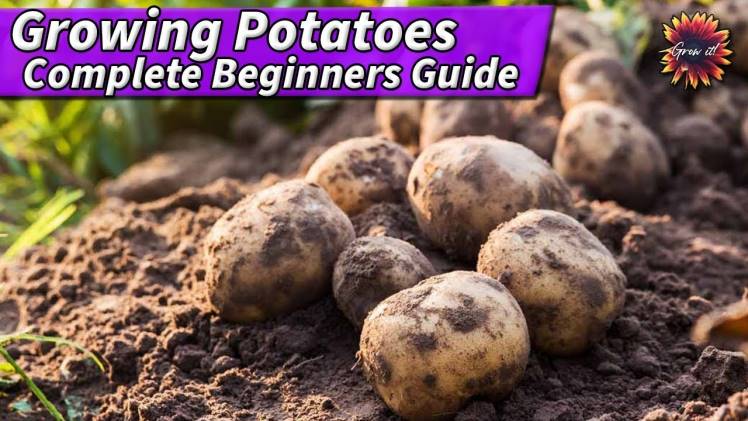Growing Potatoes: 101 Guide

Did you know that potatoes have been around for thousands of years? Yeah, you heard right, quite old! But have you ever thought about growing your own potatoes? If you’ve your own farm, you must think once in a while of Growing Potatoes.
The satisfaction of digging up your fresh spuds is unmatched. For some folk, cultivating is a therapy.
Without further ado, let’s dive into potato world:
Ideal Season for Planting Potatoes
Ever wonder which season Potatoes thrive? Well, the seasons that are suitable for planting potatoes are:
Spring Planting:
Start planting as soon as the soil is workable in the spring, usually when the soil temperature reaches about 45°F (7°C). This ensures that the tubers develop before the heat of summer.
Fall Planting:
In regions with mild winters, fall planting can be advantageous. Planting 2-4 weeks before the first expected frost allows the tubers to establish roots without the threat of extreme cold.
Preparing the Soil for Optimal Growth
A well prepared soil sets the foundation for a successful potato harvest:
Soil pH:
Maintaining the right soil pH is pivotal for successful potato cultivation. Potatoes thrive in soils that lean slightly acidic to neutral. To ascertain your soil’s pH level, it’s wise to perform a soil test. Based on the results, adjust the pH by adding amendments as needed, ensuring an optimal range of 5.0 to 6.5 for robust potato growth.
Soil Preparation:
If you plant the potato without checking the soil. Then, oh dear! It would be a disaster. Because preparing the soil sets the foundation for a productive potato crop. Prior to planting, cultivate the soil to achieve a loose, friable texture that promotes root development. Remove any debris that could hinder growth.
Planting Potatoes: Steps for Success
Here are steps for growing potatoes:
- Once the soil is ready, it’s time to plant the potatoes:
- If using whole potatoes as seed then make sure each piece has at least one eye. Allow the cut pieces to cure for a day before planting.
- Dig trenches about 4-6 inches deep. Place the seed potatoes with the eyes facing upwards and make a space about 12 inches apart.
- As the potato plants grow, regularly hill up soil around the base of the plants. This promotes tuber development and prevents greening.
- Keep the soil consistently moist but not waterlogged. Assure adequate drainage to prevent rotting.
- Apply a balanced fertilizer rich in potassium and phosphorus. Avoid excessive nitrogen, as it can promote lush foliage at the expense of tuber growth.
- Also, monitor for common pests like potato beetles and manage diseases such as late blight through cultural practices and, if necessary, organic treatments.
Harvesting Potatoes: Timing and Techniques
Knowing when to harvest is important. If you harvest them slightly before they are ready then your whole industriousness is obliterated.
Harvesting Season:
Knowing the right time to harvest is crucial for optimal potato yield. As a general guideline, once the lush green tops of the potato plants have withered and turned brown, usually about 2-3 weeks after the plants have bloomed, it’s time to start digging.
Digging Technique:
Being careful not to damage the tubers by gently digging around the plants using a fork or shovel. Avoid accidental cuts or punctures to the tubers. Then, harvested potatoes should be cured in a cool, dark place for 1-2 weeks before storage.




